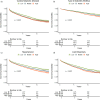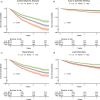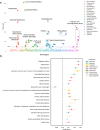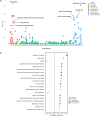Artificial intelligence-enhanced electrocardiography derived body mass index as a predictor of future cardiometabolic disease
- PMID: 38918595
- PMCID: PMC11199586
- DOI: 10.1038/s41746-024-01170-0
Artificial intelligence-enhanced electrocardiography derived body mass index as a predictor of future cardiometabolic disease
Abstract
The electrocardiogram (ECG) can capture obesity-related cardiac changes. Artificial intelligence-enhanced ECG (AI-ECG) can identify subclinical disease. We trained an AI-ECG model to predict body mass index (BMI) from the ECG alone. Developed from 512,950 12-lead ECGs from the Beth Israel Deaconess Medical Center (BIDMC), a secondary care cohort, and validated on UK Biobank (UKB) (n = 42,386), the model achieved a Pearson correlation coefficient (r) of 0.65 and 0.62, and an R2 of 0.43 and 0.39 in the BIDMC cohort and UK Biobank, respectively for AI-ECG BMI vs. measured BMI. We found delta-BMI, the difference between measured BMI and AI-ECG-predicted BMI (AI-ECG-BMI), to be a biomarker of cardiometabolic health. The top tertile of delta-BMI showed increased risk of future cardiometabolic disease (BIDMC: HR 1.15, p < 0.001; UKB: HR 1.58, p < 0.001) and diabetes mellitus (BIDMC: HR 1.25, p < 0.001; UKB: HR 2.28, p < 0.001) after adjusting for covariates including measured BMI. Significant enhancements in model fit, reclassification and improvements in discriminatory power were observed with the inclusion of delta-BMI in both cohorts. Phenotypic profiling highlighted associations between delta-BMI and cardiometabolic diseases, anthropometric measures of truncal obesity, and pericardial fat mass. Metabolic and proteomic profiling associates delta-BMI positively with valine, lipids in small HDL, syntaxin-3, and carnosine dipeptidase 1, and inversely with glutamine, glycine, colipase, and adiponectin. A genome-wide association study revealed associations with regulators of cardiovascular/metabolic traits, including SCN10A, SCN5A, EXOG and RXRG. In summary, our AI-ECG-BMI model accurately predicts BMI and introduces delta-BMI as a non-invasive biomarker for cardiometabolic risk stratification.
© 2024. The Author(s).
Conflict of interest statement
The authors declare no competing non-financial interests, but the following competing financial interests: J.W.W. was previously on the advisory board for Heartcor solutions LLC and previously received research support from Anumana, J.S.W. has consulted for MyoKardia, Inc., Pfizer, Foresite Labs, and Health Lumen, and receives research support from Bristol Myers-Squibb. The remaining authors declare no Competing Financial Interests.
Figures









References
Grants and funding
LinkOut - more resources
Full Text Sources
Miscellaneous

